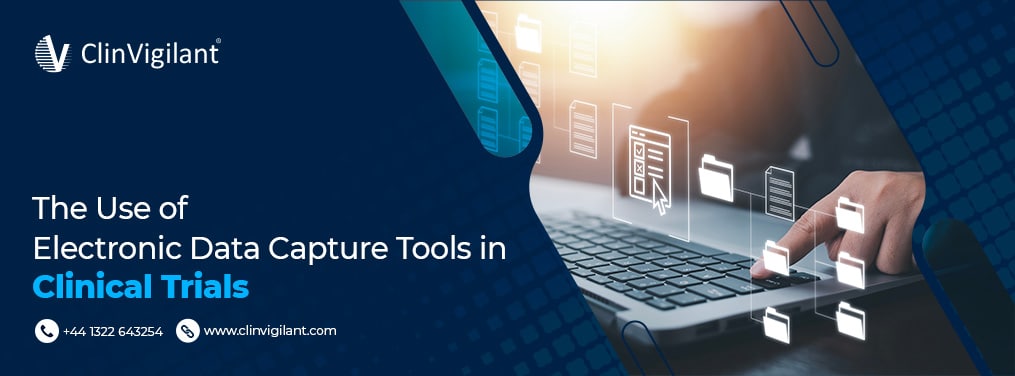
Clinical trials are crucial to medical research because they shed light on the efficacy and safety of novel therapeutics. Electronic Data Capture (EDC) systems have been one of the most revolutionary changes in the clinical trial scene throughout the years. This article discusses the function of EDC in clinical trials, the top EDC platforms, and the overall significance of EDC in clinical research.
Understanding EDC in Clinical Trials
Modern clinical trials have made extensive use of electronic data capture (EDC), which has completely changed data management. EDC is the process of gathering, verifying, and managing clinical trial data through the use of electronic technology. It offers a number of benefits and substitutes for time-consuming paper-based procedures. EDC provides real-time access to crucial information while ensuring data correctness and reducing errors.
Processes for collecting data are expedited, and remote monitoring capabilities are advantageous to researchers and stakeholders. EDC also lowers the costs connected with paper-based techniques. EDC has essentially developed into an essential part of clinical research, promoting effectiveness, data quality, and quick decision-making in the hunt for new medicines and treatments.
Advantages of Electronic Data Capture (EDC) in Clinical Trials:
Enhanced Data Accuracy: By reducing the possibility of transcription errors, illegible handwriting, and missing or inconsistent data, EDC solutions greatly increase data accuracy. Real-time data validation checks assist in ensuring that entered data satisfies preset criteria, lowering the possibility of inaccurate data.
Real-Time Data Access: Clinical trial data can be accessed in real-time by stakeholders and academics thanks to EDC. Due to this immediate access, decisions can be made quickly, interventions can be made when they are needed, and overall trial oversight is improved. Researchers can keep an eye on the trial’s development, spot trends, and quickly address any safety issues.
Streamlined Data Collection: Data collection is more efficiently carried out thanks to EDC systems. They offer electronic case report forms (eCRFs) that are simple to use and may be altered to meet the particular requirements of the trial. This makes data entry for site employees easier and cuts down on the time needed for data gathering, improving the efficiency of clinical studies.
Remote Monitoring: EDC systems offer remote monitoring, which eliminates the demand for regular on-site visits. This enables more thorough and consistent data assessment in addition to saving time and money. Remote monitoring can assist in early problem detection and research protocol adherence.
Data Quality Control: EDC systems have built-in data validation and edit checks that notify users of discrepancies and missing data immediately. Using a preventative approach to data quality control, less time and money must be spent on data cleaning after data collection.
Cost Savings: EDC does away with the expenses related to managing data on paper. This covers the cost of producing paper forms, distributing supplies to trial locations, and maintaining physical records. These cost savings can add up throughout the course of a clinical trial.
Improved Regulatory Compliance: EDC systems are made to abide by legal specifications, such as the United States’ 21 CFR Part 11. They simplify the process of getting ready for inspections and audits by offering audit trails, electronic signatures, and data security safeguards to assure data integrity and regulatory compliance.
Efficient Data Integration: Integrating EDC systems with other clinical trial management systems (CTMS), electronic health records (EHRs), and laboratory information management systems (LIMS) is efficient. This integration improves the overall effectiveness of the clinical trial process by streamlining data flow and reducing manual data entry.
Data Security: Data security is a top priority for EDC systems, which use encryption, user authentication, and access controls to safeguard sensitive patient data. This guarantees that patient privacy is upheld and that data breaches are kept to a minimum.
Electronic Patient-Reported Outcomes (ePROs): EDC systems can support the electronic collection of patient-reported outcomes, enabling patients to take part in clinical trials from a distance more easily. This boosts trial participation and patient engagement rates.
Key Considerations in EDC System Selection
The effectiveness, accuracy, and outcome of a clinical study can all be impacted by choosing the appropriate Electronic Data Capture (EDC) system. The following important factors ought to direct the selection of an EDC system:
User Interface and Usability: For site workers who will be in charge of data entry, the EDC system’s user interface needs to be simple and easy to use. An effective interface shortens the learning curve, decreases user mistakes, and encourages effective data collecting. To ensure usability, user feedback and testing should be taken into account during the selection process.
Data Security and Compliance: Because clinical trials frequently contain sensitive patient data, data security is crucial. Strict data security requirements, including as encryption, user authentication, access controls, and audit trails, must be met by the chosen EDC system. Assuring data integrity and patient confidentiality it should also enable regulatory compliance, such as that required by 21 CFR Part 11 in the United States.
Integration Capabilities: Integrating EDC with other clinical trial management systems (CTMS), electronic health records (EHRs), laboratory information management systems (LIMS), and data analytics tools should be a breeze. A trial ecology that functions well is promoted through effective integration, which decreases manual data entry and improves data flow. To prevent data silos, compatibility with existing systems is essential.
Scalability: The EDC system must be expandable to meet the particular requirements of the clinical trial. It ought to support a range of data complexity and volume, allowing for extension as the experiment goes on. Scalability guarantees that the system will continue to function well during trials of various sizes and scopes.
Compliance with Regulatory Requirements: Regulatory bodies like the FDA and EMA have specific guidelines for collecting and handling electronic data. These needs must be supported by the EDC system of choice, which must also offer capabilities like electronic signatures, audit trails, and data validation checks. It should make it easier to create datasets prepared for regulatory submission.
Data Quality Control: Reliable EDC systems have built-in data validation and edit checks that quickly spot errors and missing data. Effective data quality management reduces the need for labor- and resource-intensive data cleaning procedures after data collection is finished.
Vendor Support and Training: Consider the quality of vendor support and training made available by the EDC system vendor. To ensure that site workers and researchers can utilize the system efficiently, adequate training is necessary. Furthermore, prompt customer service is essential for resolving any problems or inquiries that can occur throughout the trial.
Cost and Budget: Calculate the EDC system’s total cost of ownership, taking into account licensing fees, setup charges, and ongoing maintenance costs. Make sure the system you choose is within the trial’s financial restrictions. Cost-effectiveness is crucial, but it shouldn’t come at the expense of the system’s performance and quality.
Reputation and Reliability of the seller: Do some research on the seller of the EDC system’s reputation and dependability. Look for reviews of the system from other clinical trial sponsors, contract research organizations (CROs), and research organizations. A reliable and efficient EDC solution is more likely to be offered by a reputable and established vendor.
Adaptability to Trial Design: The EDC system ought to be adaptable to diverse trial designs, including distinct therapeutic fields and clinical trial phases (Phase I, II, III, and IV). It should take into account the trial’s particular requirements for data collecting, such as the use of electronic patient-reported outcomes (ePROs) or intricate data structures.
EDC in Clinical Research: Expanding Horizons
In addition to revolutionizing data collecting, electronic data capture methods have significantly advanced clinical research as a whole.
Speeding Up Clinical Trials: EDC shortens the time needed for data entry and validation, accelerating the clinical trial procedure. This quickening may enable patients to receive treatments that could save their lives.
Providing for Remote Trials: The COVID-19 epidemic brought home how crucial remote trials are. For clinical studies to continue amid lockdowns and restrictions, remote data gathering has been made possible thanks in large part to EDC technologies.
Improved Data Quality: In clinical research, high-quality data are crucial. EDC systems improve data quality, including built-in data validation tests and real-time problem warnings.
Assistance with Regulatory Compliance: The burden of regulatory submissions and audits is reduced since EDC systems are made to adhere to regulatory requirements.
Promoting Cooperation: Real-time collaboration between stakeholders, including researchers, sponsors, CROs, and regulatory bodies, is made possible through EDC systems.
Conclusion
Clinical trial landscape has changed as a result of electronic data capture (EDC), which provides better data accuracy, efficiency, and real-time insights. The success of a clinical study depends on selecting the optimal EDC system for that trial’s particular requirements. EDC’s influence also extends beyond data collection, affecting every step of the clinical research process. EDC is anticipated to play an ever more significant role in influencing clinical trials’ future and enhancing patient outcomes as technology develops.

